Abstract
Copper-binding activity by exopolymers from adherent cells of a freshwater-sediment bacterium was demonstrated by a combination of equilibrium dialysis and flameless atomic absorption spectrometry. Crude, cell-free exopolymer preparations containing protein and polysaccharide components bound up to 37 nmol of Cu per mg (dry weight). A highly purified exopolysaccharide preparation bound up to 253 nmol of Cu per mg of carbohydrate. The conditional stability constant for the crude exopolymer-Cu complex was 7.3 X 10(8). This value was similar to those obtained for Cu complexes formed with humic acids and xanthan, an exopolysaccharide produced by Xanthomonas campestris. Studies conducted at copper concentrations, pHs, and temperatures found in sediments from which the bacterium was isolated indicated that the exopolymers were capable of binding copper under natural conditions.
Full text
PDF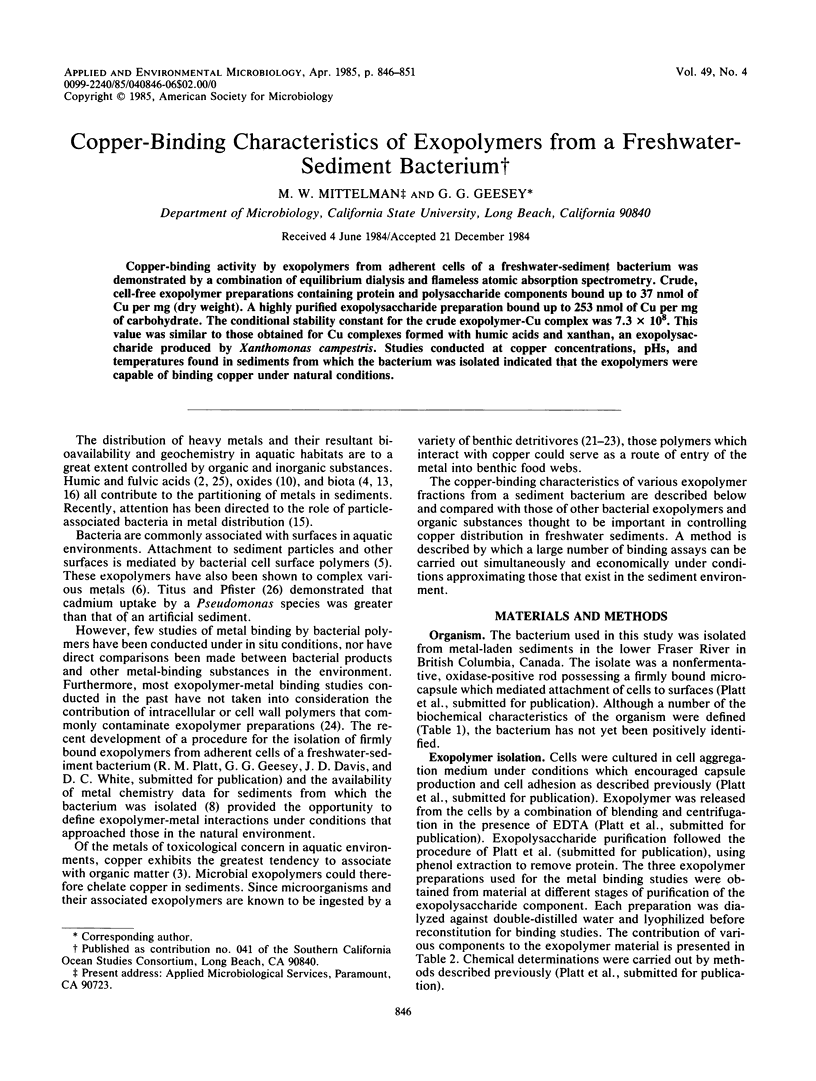

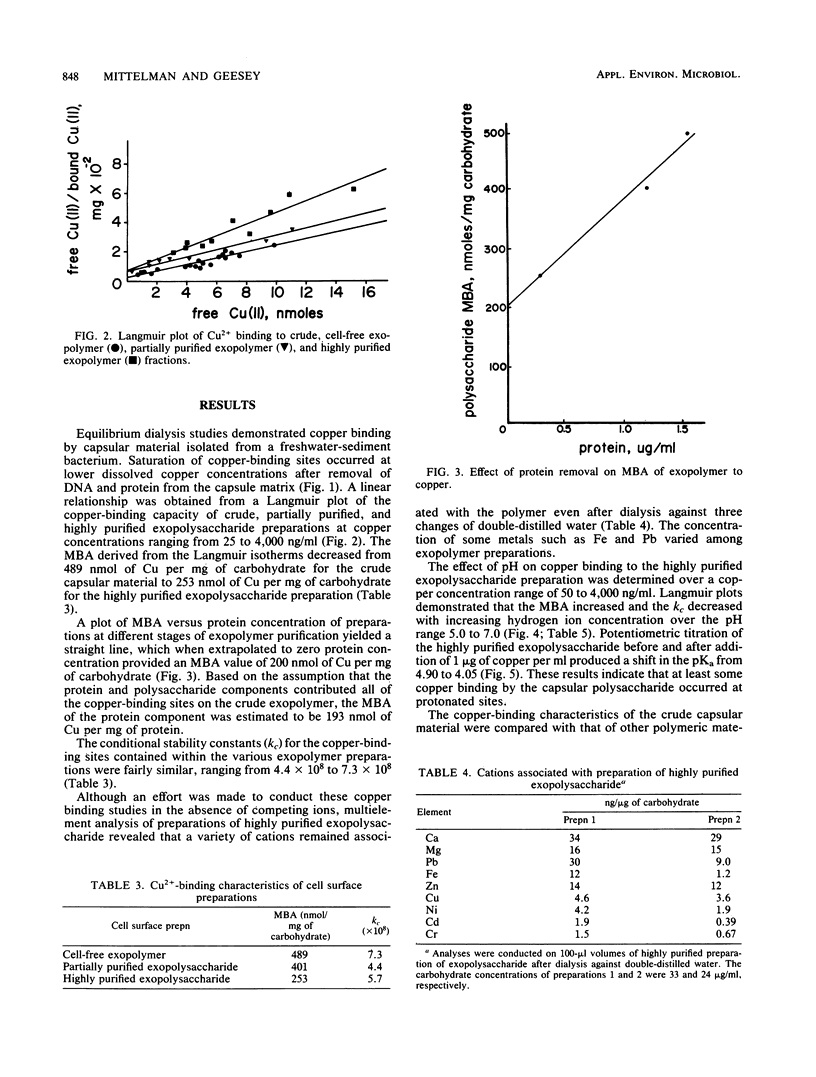
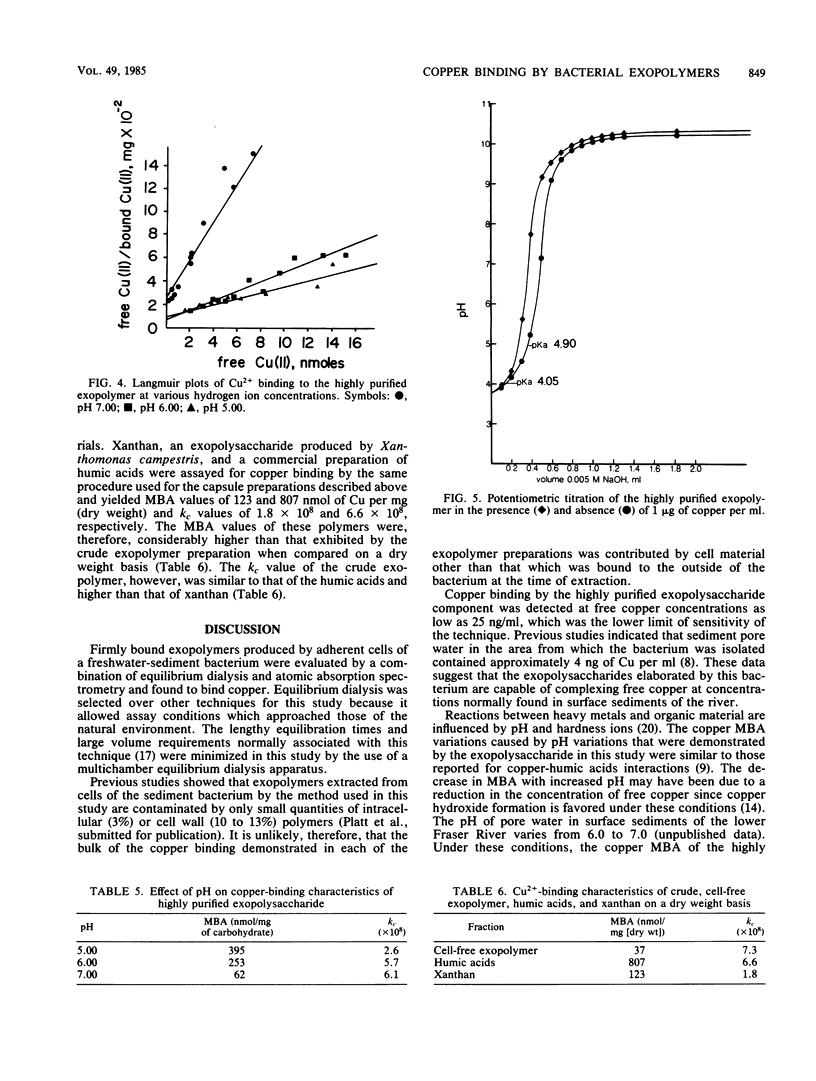
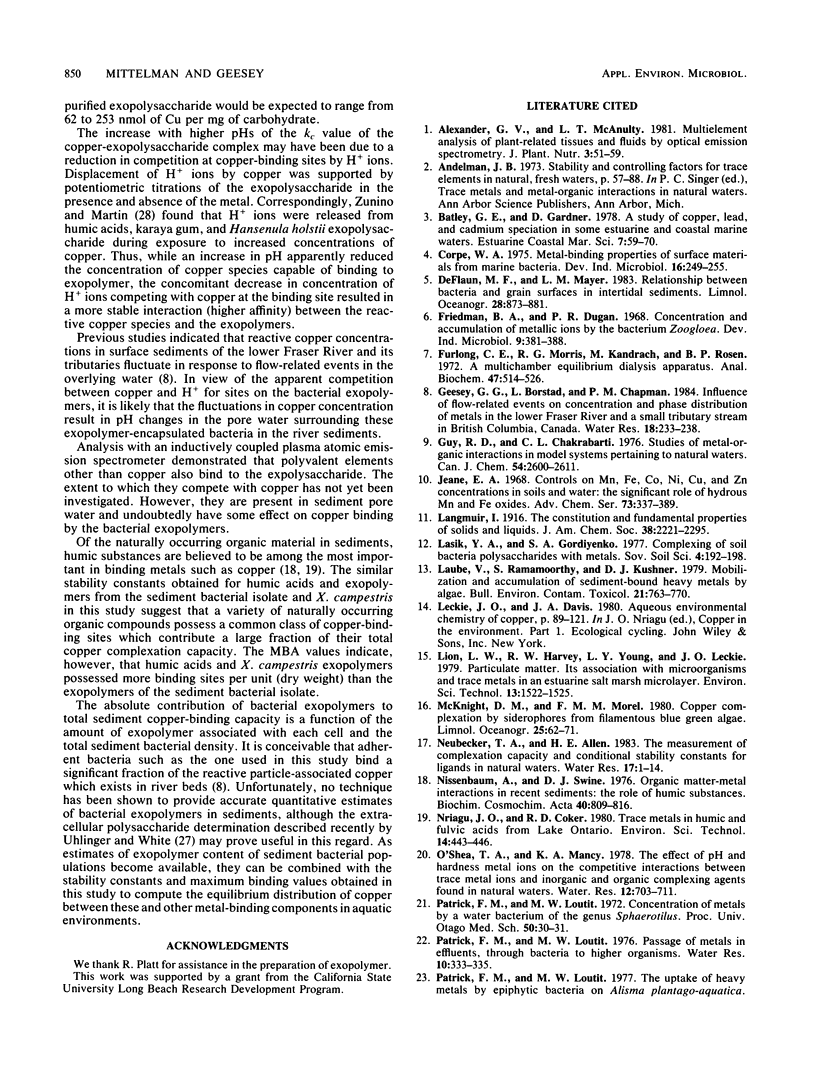
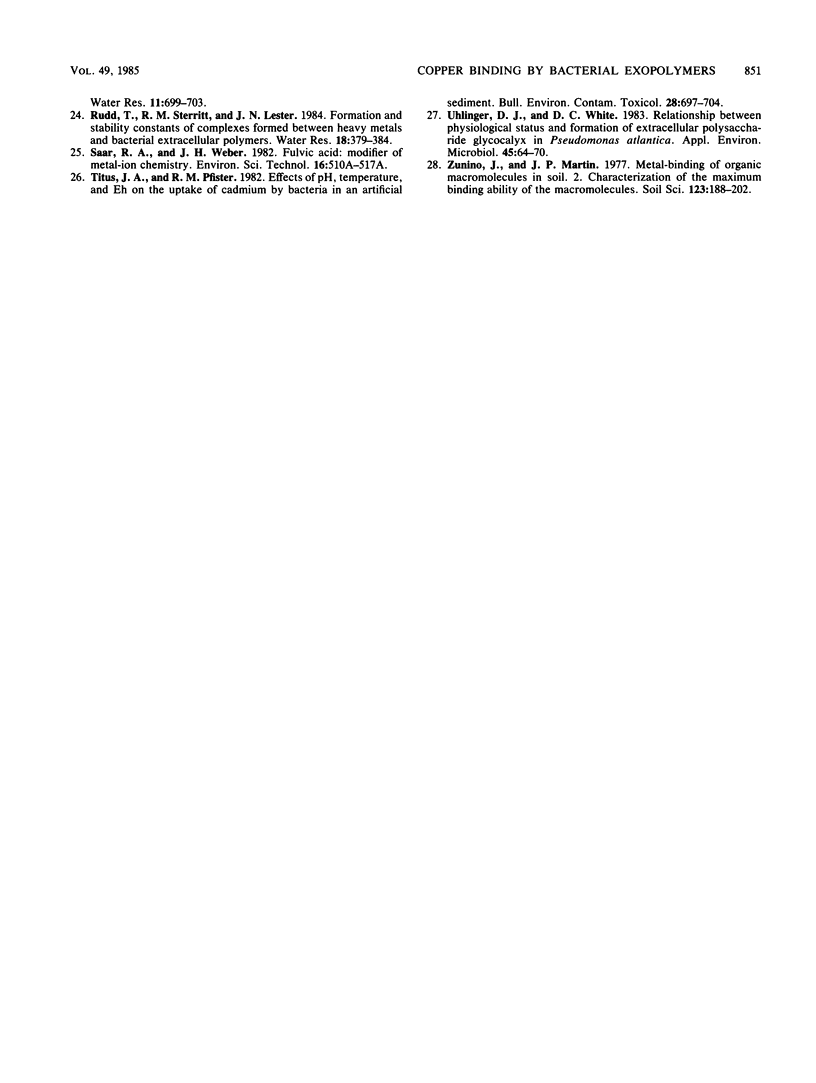
Selected References
These references are in PubMed. This may not be the complete list of references from this article.
- Furlong C. E., Morris R. G., Kandrach M., Rosen B. P. A multichamber equilibrium dialysis apparatus. Anal Biochem. 1972 Jun;47(2):514–526. doi: 10.1016/0003-2697(72)90146-7. [DOI] [PubMed] [Google Scholar]
- Laube V., Ramamoorthy S., Kushner D. J. Mobilization and accumulation of sediment bound heavy metals by algae. Bull Environ Contam Toxicol. 1979 Apr;21(6):763–770. doi: 10.1007/BF01685502. [DOI] [PubMed] [Google Scholar]
- Titus J. A., Pfister R. M. Effects of pH, temperature, and Eh on the uptake of cadmium by bacteria and an artificial sediment. Bull Environ Contam Toxicol. 1982 Jun;28(6):697–704. doi: 10.1007/BF01605638. [DOI] [PubMed] [Google Scholar]
- Uhlinger D. J., White D. C. Relationship Between Physiological Status and Formation of Extracellular Polysaccharide Glycocalyx in Pseudomonas atlantica. Appl Environ Microbiol. 1983 Jan;45(1):64–70. doi: 10.1128/aem.45.1.64-70.1983. [DOI] [PMC free article] [PubMed] [Google Scholar]


